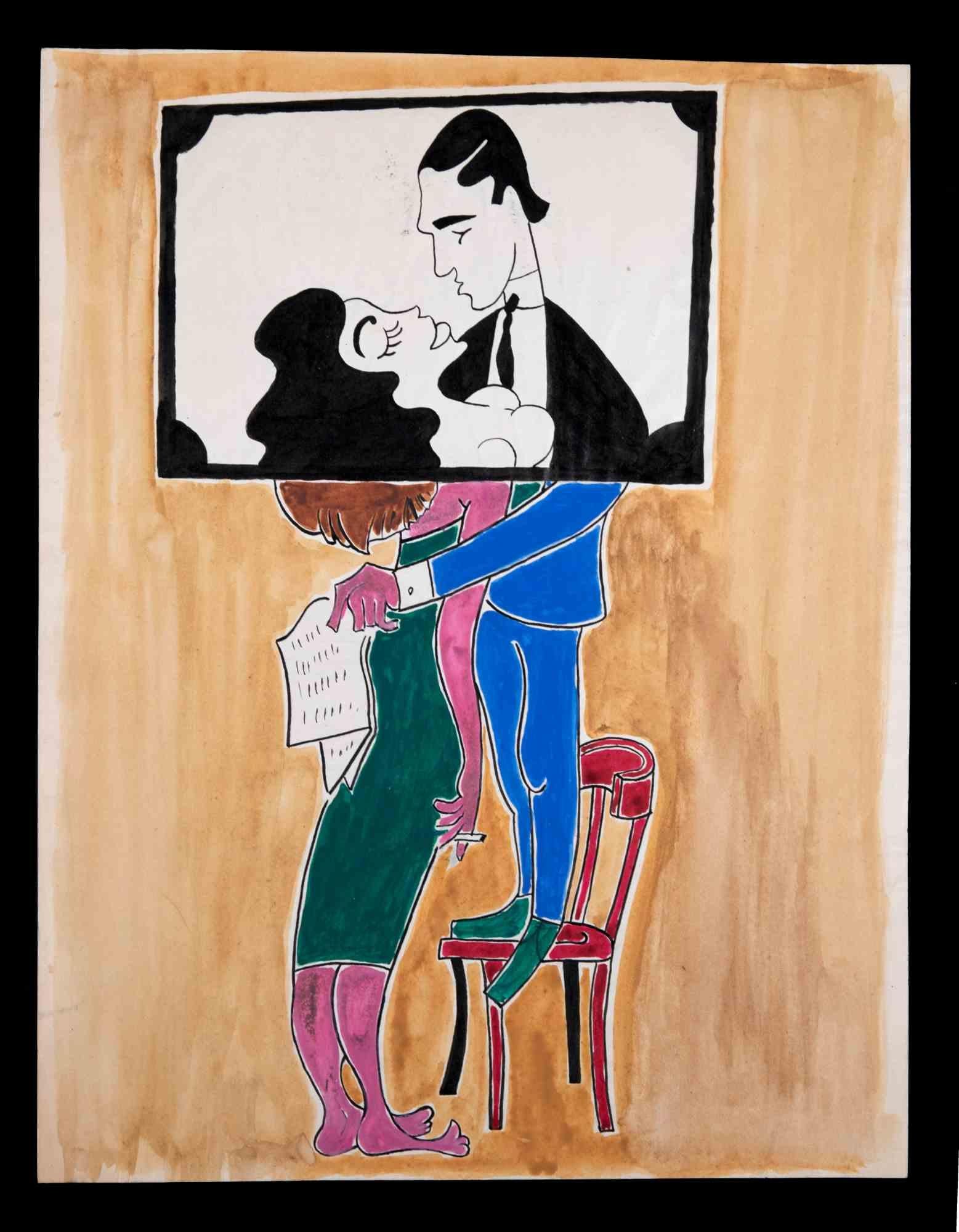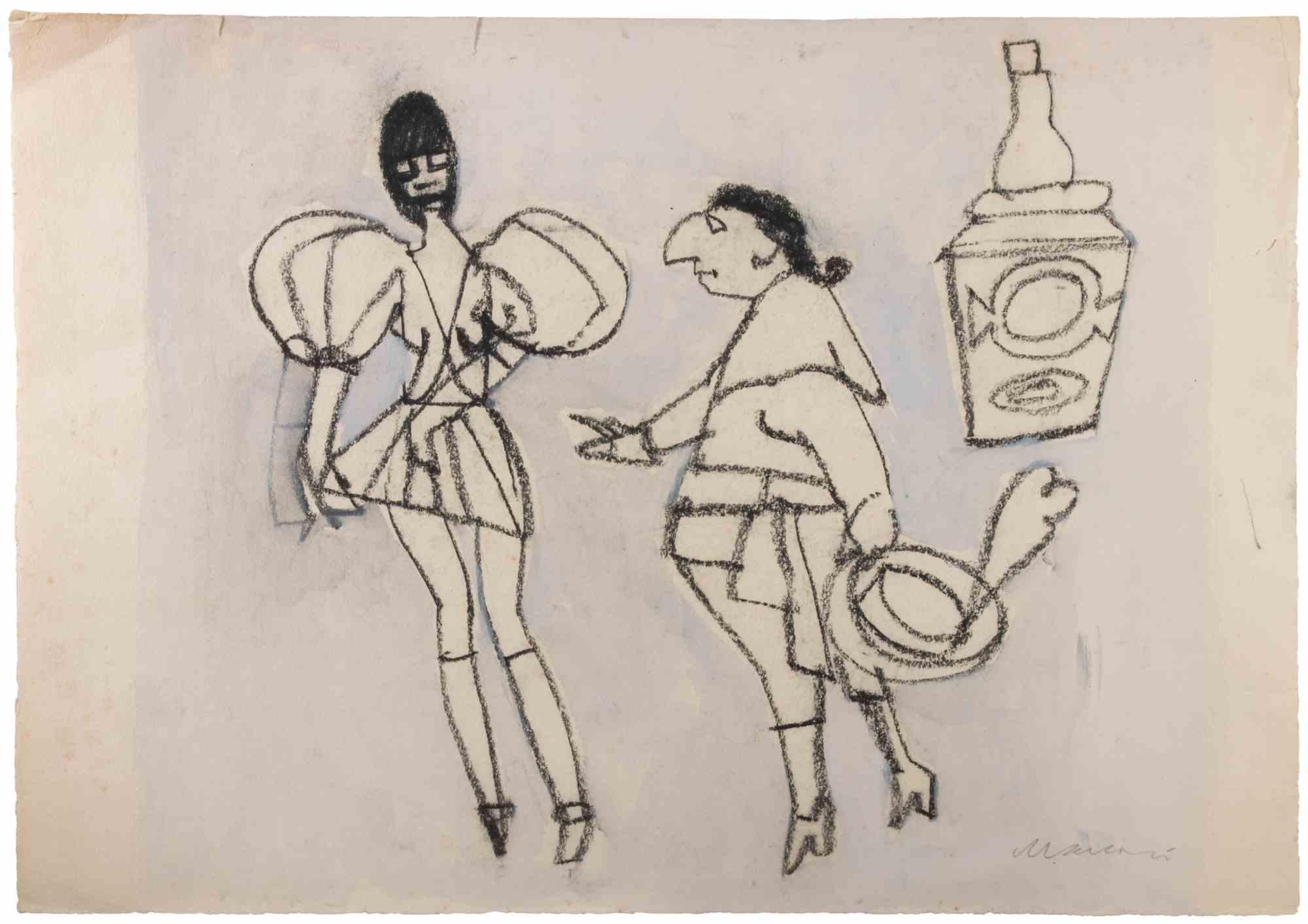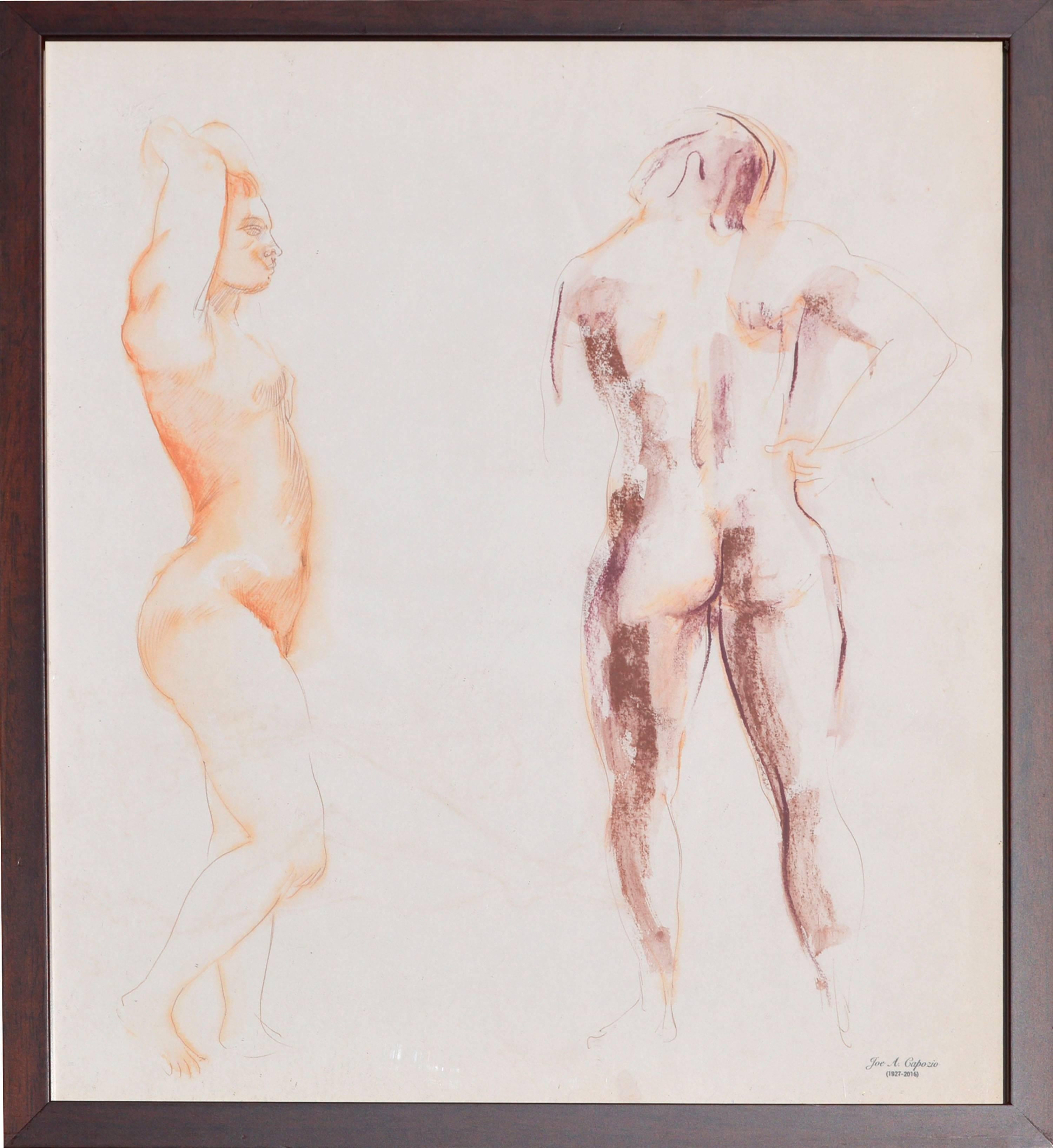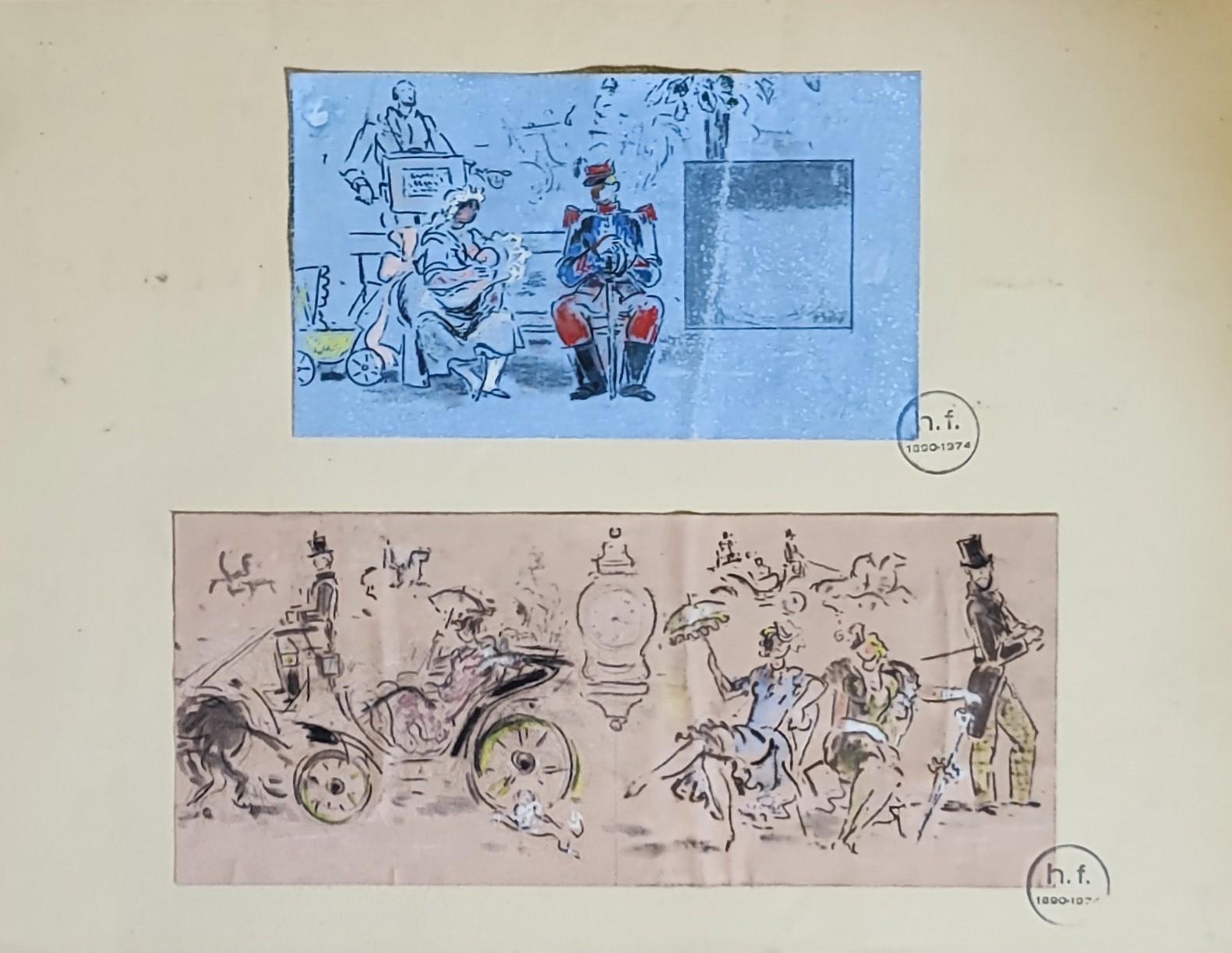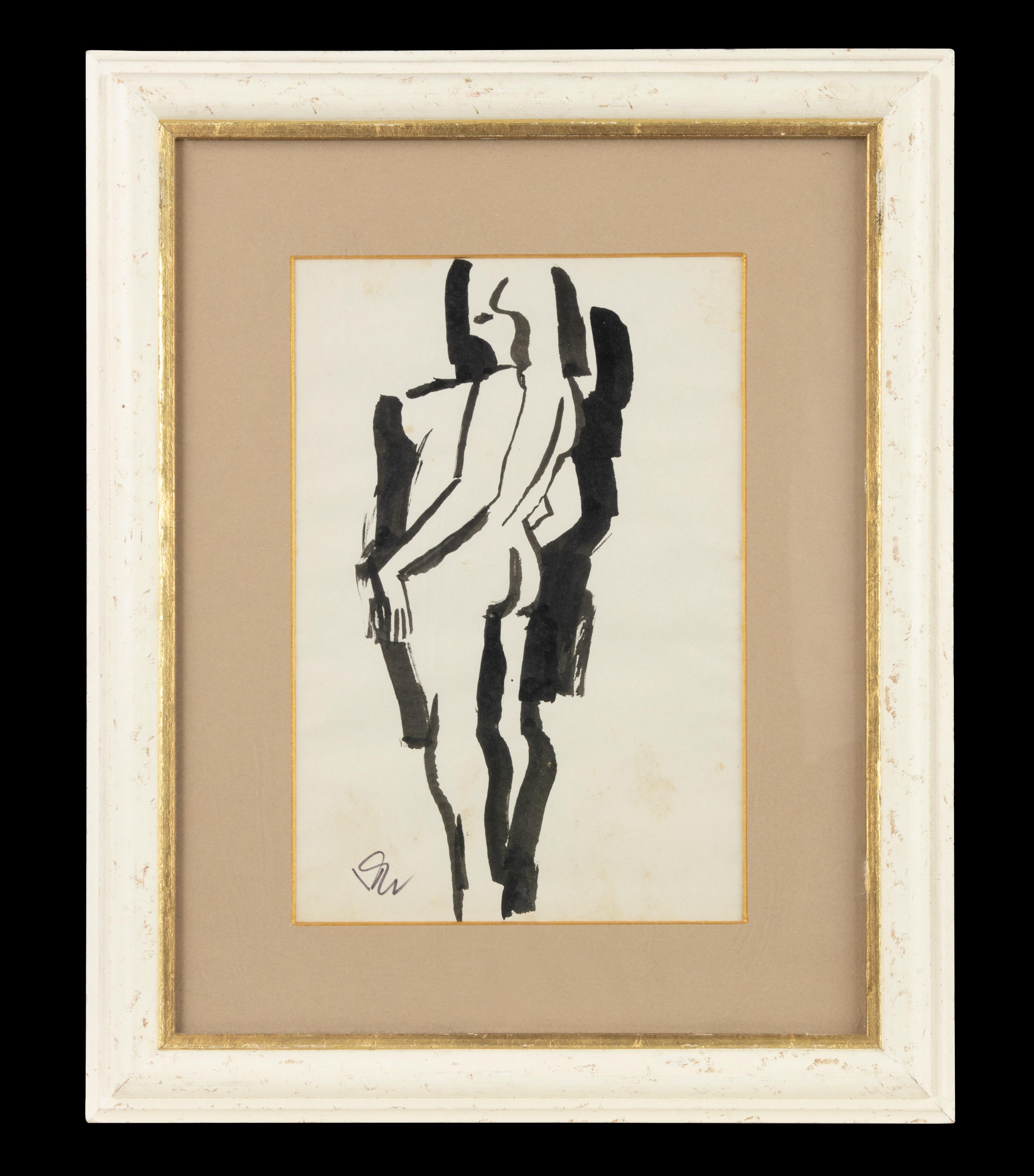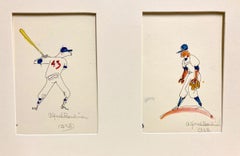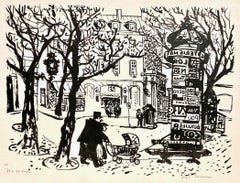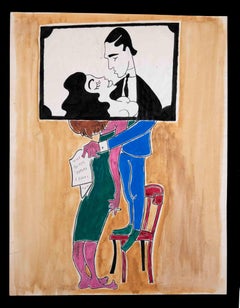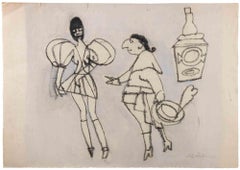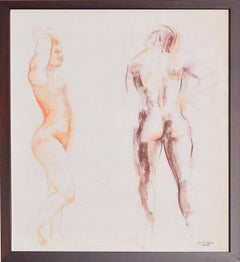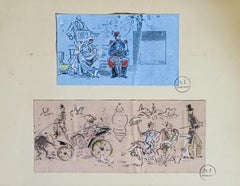Items Similar to Alfred Bendiner, La Alsacienne (pair)
Want more images or videos?
Request additional images or videos from the seller
1 of 6
Alfred BendinerAlfred Bendiner, La Alsacienne (pair)1963
1963
$1,500
£1,135.27
€1,303.51
CA$2,136.87
A$2,317.49
CHF 1,217.23
MX$28,150.01
NOK 15,231.76
SEK 14,341.55
DKK 9,731.63
About the Item
Leave it to the Bendiners to find an Alsatian restaurant in Paris (La Taverne Alsacienne) and use it's stationary to such a great end! And thank goodness that the paper required two sheets and the artist didn't try to do this on one sheet !!! (Or maybe he did and that no longer exists?)
Although we've matted the drawings side by side as seen here, they could also be framed back to back with glazing on both sides. The dimensions are for the individual sheet sizes. The mat measures 18 x 24 inches.
Both drawings are authenticated by the artist's wife, Betty Bendiner, in pencil. One sheet is titled on the reverse, in another hand, in pencil.
- Creator:Alfred Bendiner (1899 - 1964, American)
- Creation Year:1963
- Dimensions:Height: 10.75 in (27.31 cm)Width: 8.25 in (20.96 cm)
- Medium:
- Movement & Style:
- Period:
- Condition:Very, very good condition. Some buckling on 'reverse' view.
- Gallery Location:New York, NY
- Reference Number:1stDibs: LU1410212496852
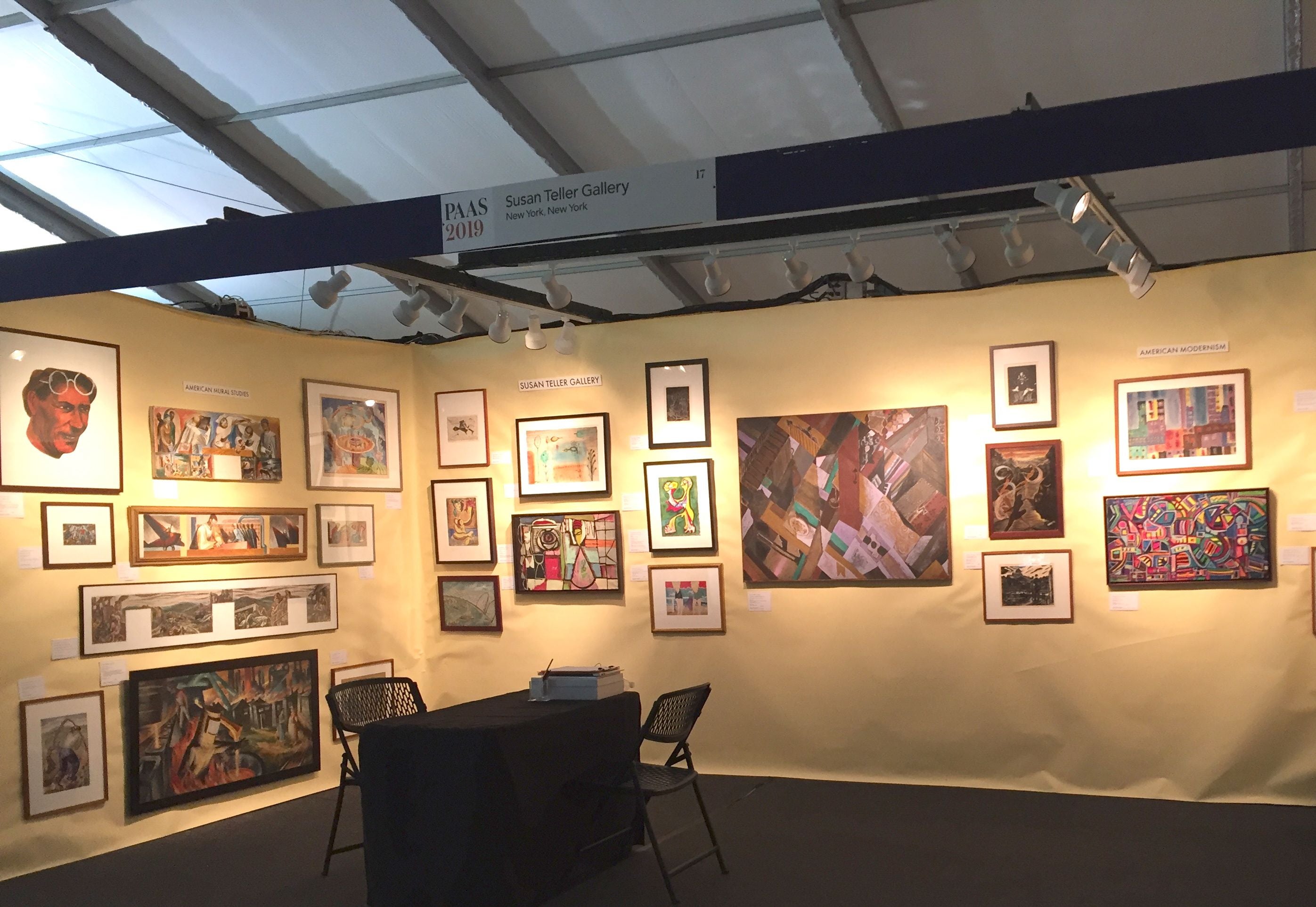
About the Seller
4.9
Vetted Professional Seller
Every seller passes strict standards for authenticity and reliability
Established in 1988
1stDibs seller since 2020
124 sales on 1stDibs
Typical response time: 3 hours
- ShippingRetrieving quote...Shipping from: New York, NY
- Return Policy
Authenticity Guarantee
In the unlikely event there’s an issue with an item’s authenticity, contact us within 1 year for a full refund. DetailsMoney-Back Guarantee
If your item is not as described, is damaged in transit, or does not arrive, contact us within 7 days for a full refund. Details24-Hour Cancellation
You have a 24-hour grace period in which to reconsider your purchase, with no questions asked.Vetted Professional Sellers
Our world-class sellers must adhere to strict standards for service and quality, maintaining the integrity of our listings.Price-Match Guarantee
If you find that a seller listed the same item for a lower price elsewhere, we’ll match it.Trusted Global Delivery
Our best-in-class carrier network provides specialized shipping options worldwide, including custom delivery.More From This Seller
View AllAlfred Bendiner, (Baseball Hitter and Pitcher -- The Philadelphia Phillies?)
By Alfred Bendiner
Located in New York, NY
Of course it's possible that these baseball players aren't from a Philadelphia team, but I doubt it. There was so much drama and intrigue with both the Philadelphia Phillies...
Category
Mid-20th Century American Modern Figurative Drawings and Watercolors
Materials
India Ink, Watercolor
Alfred Bendiner, Flic et Bonne (Gendarme and Nursemaid)
By Alfred Bendiner
Located in New York, NY
The world was Bendiner's oyster, but here he shows us a all we need in a small corner of Paris. It's charming and safe: the 'Flic et Bonne' (gendarme and nursemaid) are together, goi...
Category
1950s American Modern Landscape Prints
Materials
Lithograph
Alfred Bendiner, Baccaloni in Rosenkavalier
By Alfred Bendiner
Located in New York, NY
The Italian opera singer, Salvatore Baccaloni (1900-1969) often took comic roles. He worked with several opera companies in Philadelphia between 1951 and 1966. Bendiner was a world t...
Category
Mid-20th Century American Modern Figurative Drawings and Watercolors
Materials
Gouache
Alfred Bendiner, Santa Fe Cowhands (New Mexico)
By Alfred Bendiner
Located in New York, NY
Apparently Bendiner never went a day without drawing. He was amazing!
In this scene of a young 'cowgirl' is working a lasso while an 'old cowhand' looks on -- clutching a cigaret of...
Category
1950s American Modern Figurative Drawings and Watercolors
Materials
Watercolor
Louis Bouché, (Standing Woman)
By Louis Bouché
Located in New York, NY
Louis Bouché was based in New York and taught at the Art Students League. The figure was an important subject in his oeuvre. An ink drawing on tan paper, ...
Category
Early 20th Century Ashcan School Figurative Drawings and Watercolors
Materials
Ink
Abe Ajay, Peggy
By Abe Ajay
Located in New York, NY
Abraham Ajay (also known as Abe Ajay or even 'Ajay') was from a Syrian Pennsylvanian family who came to New York City. He attended the Art Students League and...
Category
1930s American Modern Figurative Prints
Materials
Lithograph
You May Also Like
A Couple - Original Drawing By Gérard Lauzier - Mid-20th Century
By Gérard Lauzier
Located in Roma, IT
A Couple is an Original Ink and Watercolor realized by Gérard Lauzier (1932-2008).
Good condition and vivid colors.
No signature.
Gérard Lauzier (30 November 1932 – 6 December 2008) was a French comics...
Category
Mid-20th Century Modern Figurative Drawings and Watercolors
Materials
Watercolor
The Knight and the Lady - Drawing by Mino Maccari - mid-20th Century
By Mino Maccari
Located in Roma, IT
Charcoal and watercolor drawing on paper realized by Mino Maccari in the mid-20th Century.
Hand signed in pencil.
Some minor signs of the time on edgex.
Category
Mid-20th Century Modern Figurative Drawings and Watercolors
Materials
Watercolor
Mid Century Figurative Study of Pair
By Joseph Capozio
Located in Soquel, CA
Compelling figurative study in gouache and pencil by Joesph Capozio (American, 1928-2016). Estate stamp lower right corner with bio on verso. Presented in mahogany wood frame. Framed size: 19"H x 17"W.
Capozio was born in Philadelphia, Pennsylvania in 1927. After serving in World War II, he attended art school in Philadelphia, Pennsylvania. He lived and worked in San Francisco, California; New Orleans, Louisiana; Siesta Key...
Category
1960s American Modern Figurative Paintings
Materials
Gouache, Pencil
$600 Sale Price
20% Off
Sketch duo
By Henri Fehr
Located in Genève, GE
Work on paper
Workshop stamp
Sketch n°1 : 13 x 22.5 cm
Sketch n°2 : 13.5 x 32 cm
Category
20th Century Figurative Drawings and Watercolors
Materials
Charcoal, Crayon, Pastel
A Pair of Mid-Century, Pen & Ink Interior Drawings by Artist Harold Haydon
By Harold Haydon
Located in Chicago, IL
A pair of delightful, Mid-Century interior scenes in pen & ink by artist Harold Haydon.
Image sizes: 6" x 9" each. Each are archivally matted to 12" x 16".
Harold Emerson Haydon w...
Category
1950s American Modern Interior Drawings and Watercolors
Materials
Ink, Pen
Untitled - Drawing by Remo Brindisi - 1970s
By Remo Brindisi
Located in Roma, IT
Untitled is a modern artwork realized by Remo Brindisi in 1970s
Black and white china ink drawing.
Hand signed on the lower margin.
Includes f...
Category
1970s Contemporary Figurative Drawings and Watercolors
Materials
Paper, Ink
More Ways To Browse
Paris Restaurants
Matisse Watercolour
Nude Woman Artwork
Robert Avery
Southern Gothic
Watercolor Death
Henry Miller Watercolor
African American Art Watercolors
Amate Paper
Anais Nin
Vintage Cabaret Dancers
Drawings Of Couples
Jean Paul Le Verrier
Skull Drawing
Charles Guerin
Rabbi Drawing
Utamaro Woodblock Prints
Dog Pencil Drawing
